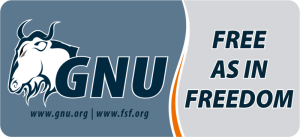
When choosing the software we use in schools, we need to be aware of the message that we're sending students. For instance, when we use Microsoft PowerPoint and refer to presentations as "Powerpoints" we're essentially endorsing and promoting a corporate brand. It's really no different than if our students only saw us drinking Coca-Cola, and we referred to all beverages as "Coke".
So, our choice of software says something in and of itself. That being said, do we want to be promoting software which is produced with improving a corporate bottom line as its main purpose? Which many of our students' families won't be able to afford to install on their home computers?
Luckily, we have many alternatives when it comes to software. Since 1984, something called the Free Software movement has existed. Introduced by Richard Stallman, free software provides users with four key freedoms:
* The freedom to run the program for any purpose.
* The freedom to redistribute copies of the software.
* The freedom to study the source code of the program to understand how it works.
* The freedom to adapt or change the program, and to release those improvements to the public so that others may benefit from them.
What do these freedoms mean for schools? The most practical benefit is that schools can save a lot of money by using free software.
Pedagogically, teachers and students benefit because the same software used at school can be freely used at home. Access to the source code means that older students have endless reference material to learn from when they begin programming.
Best of all, free software stands as a shining example of the power of sharing. The community-based values promoted by free software are much more in line with what we teach students in school than the corporate values which are represented by proprietary software.
Click on the banner above to learn more about the philosophy of the free software movement, or go straight to Richard Stallman's essay on why schools should use free software.







No comments:
Post a Comment